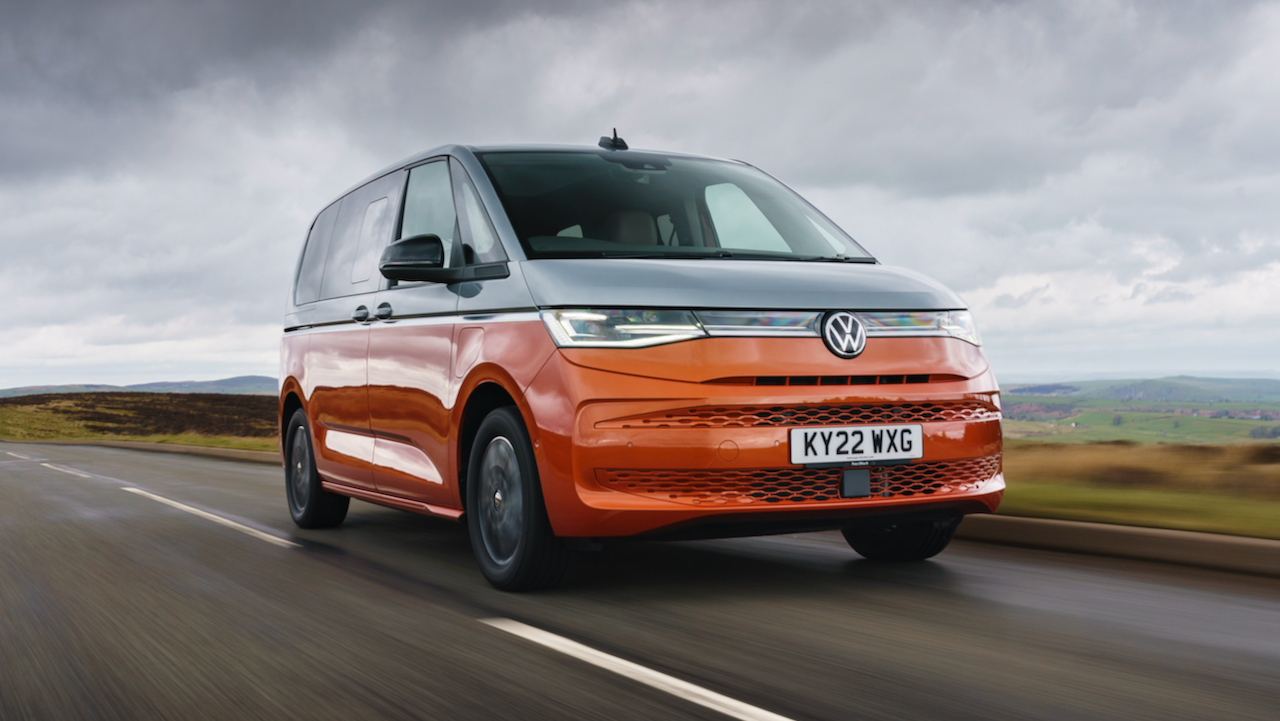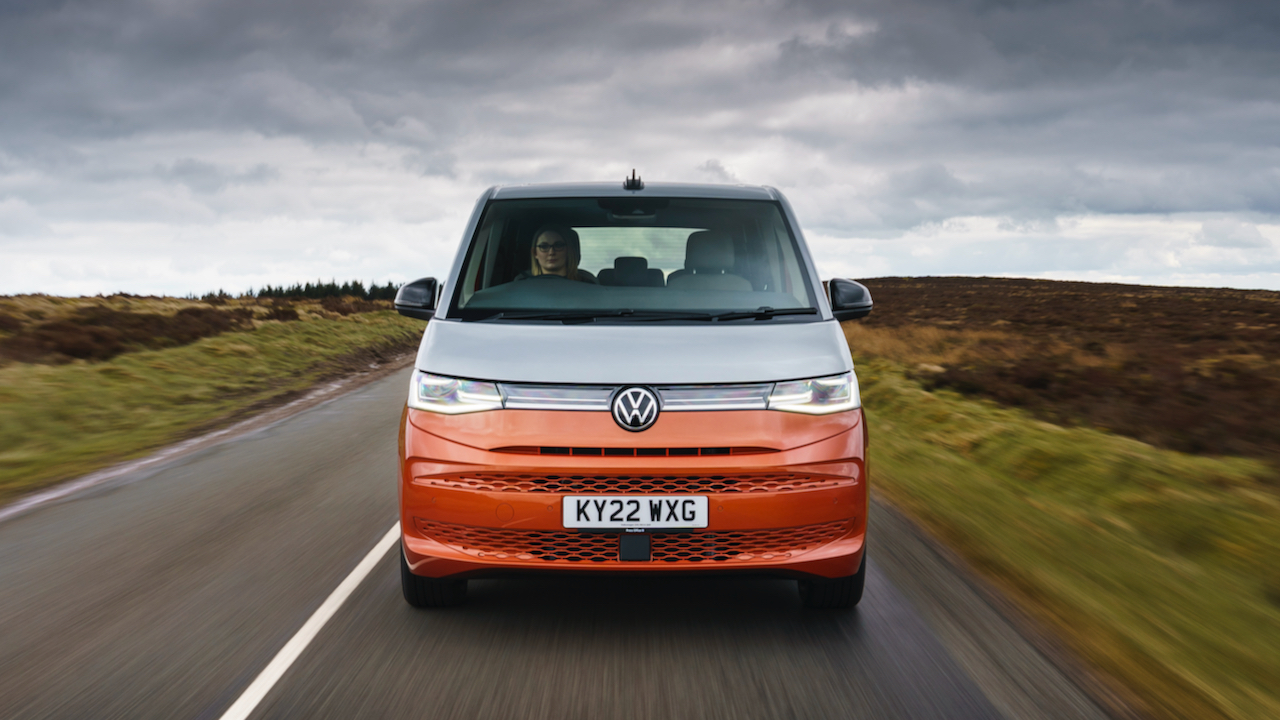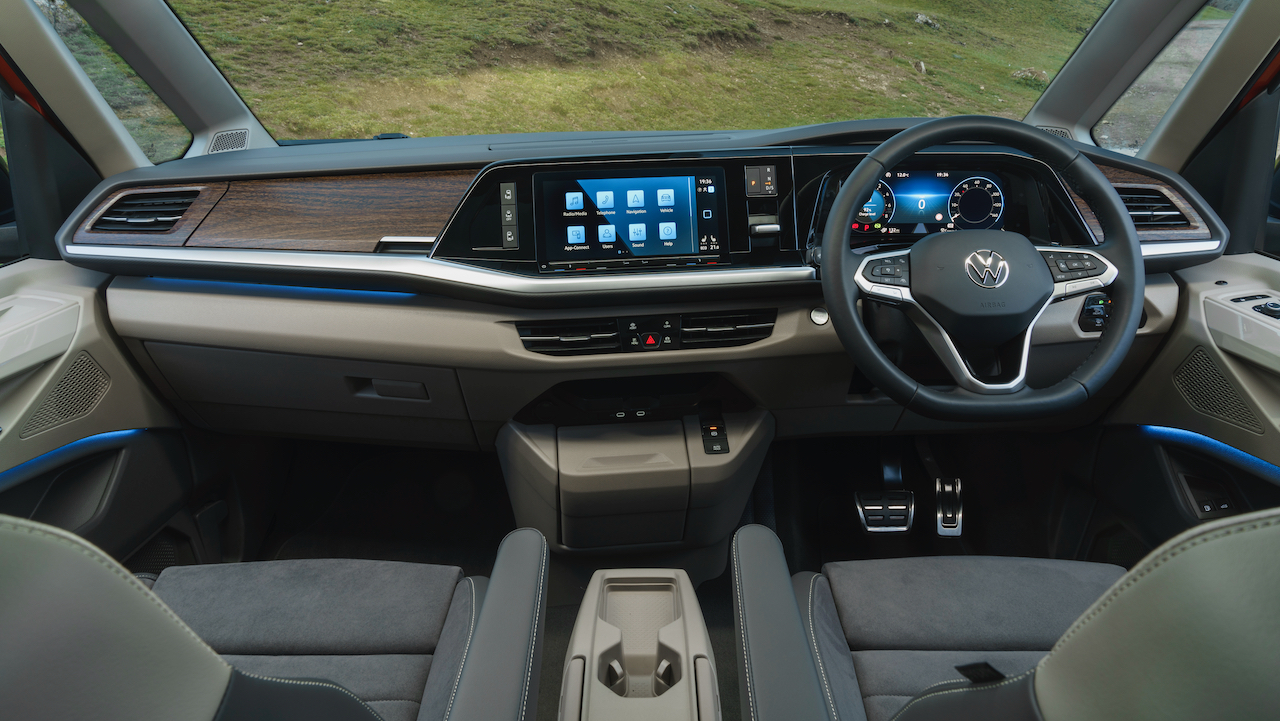
Driving
What is it like to drive?
VW expects the plug-in eHybrid to be a big customer draw for the new Multivan, though its insiders admit that a car like this will be asked to perform a wide repertoire of duties and for the likes of airport taxi firms bombing up and down motorways to deliver expectant passengers, e-range is less important than for an urban-dwelling chauffeur service or school-run family. So the balance between hybrid and pure combustion sales isn’t quite known yet. Handily, we’ve tested both.
We'll start with the entry-level 134bhp petrol, which we tested on a family holiday to the Norfolk coast. Even with four passengers, one dog, and all our luggage in tow, it coped admirably well, breezing around town while never giving the impression it was struggling too much on motorways and suchlike. It's forced to work hard, mind, as a claimed economy figure of 35.5mpg reveals, though treading lightly we managed nearer the 40mpg mark.
Likewise, the 201bhp petrol cruises incredibly smoothly for a four-cylinder, but prod it with a stick and you get a reassuring response and a mildly rorty engine note, which is… unexpected. However, even lightly loaded and with only two aboard it returned low 30s to the gallon. This can be massaged with plenty of lift-and-coast anticipation, as the DSG gearbox uncouples from the drivetrain to allow the Multivan to sail down gradients with minimal resistance.
We've not tried the diesel yet, but VW promises 148bhp and 43.5mpg. So the chances are it'll be marginally more frugal on a longer journey. Very few are expected to buy it, mind, and those that do will spend most of their time panicking about the residuals.
Tell me about the eHybrid.
Should fuel economy be a top priority, the eHybrid looks like a no-brainer. Official WLTP fuel consumption and CO2 output of 156.6mpg and 41g/km looks stunning, but in practice we averaged more like 48mpg. Call it 38-40mpg on motorway runs, topped up by zero emission e-cruising around urban areas. Claimed range from the 13kWh battery (about 10 kWh of that is usable) is 31 miles. In practice you’ll probably get 18-20. E-power can take you all the way to 70mph.
You’ll notice the eHybrid’s rough brake pedal feedback as it juggles re-gen and disc-braking, but otherwise the handover between battery and petrol power is mostly smooth and unintrusive, though if you really clog it, that diminutive 1.4-litre engine gets thrashy. On e-power alone performance is adequate up to modest motorway speeds and on A-roads.
How does it handle?
Mooching on e-power suits the Multivan’s gait best. This is a deeply unsporting car. Why on Earth VW has given it the option of paddleshifters and a sport mode is anyone’s guess. This car brings out the driver you’d like to think you are: courteous, considerate, easy-going. Every control is low effort, the steering especially, and the ride – on optional DCC adaptive suspension – is absorbent. Wheels up to 19-inches are available, and the smallest are only an inch down from that.
It’s easy to place too, not simply because the body is so slab-sided, but because the Multivan’s bonnet is more visible from the pilot’s chair than a Caravelle’s and the split A-pillars are helpful at oblique junctions and roundabouts. Tech helps where humans are fallible – all the usual reverse parking/blind-spot monitoring/forward brake-assisting/lane-keep guidance guardian angels from the existing range of MQB-based cars is now plumbed into the Multivan.
Wind noise isn’t very prevalent, but if you’re used to the stiffer structure of an estate or SUV, the occasional shudders and tremors through the open boxy structure if you catch a particularly nasty pothole mid-corner, will make you jump. You sit lower and more stretched out than in the Caravelle, and the centre of gravity seems lower and the overall balance better. The van was ponderous and took a bit of managing. This will whisk through roundabouts without seeming to tax its tyres.
Featured

Trending this week
- Car Review
BMW iX3






